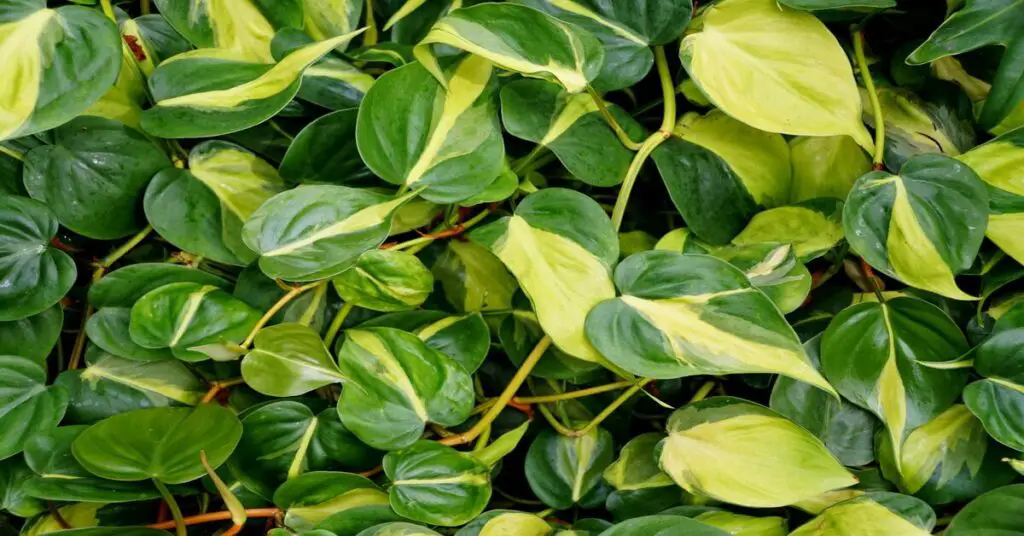The green leaves of the vining philodendron brasil are splashed with unique yellow patterns. The classic variant of this plant is the completely green philodendron hederaceum, also called a heartleaf philodendron.
Philo means “to love” in Greek, while dendron means tree. Because of this and the plants’ appearance, it is often called the tree of love.
Philodendron Brasil Care
Philodendron Brasil is a tropical plant often grown as a houseplant and can grow up to 10 ft in length. For this reason, it should have enough space for good growth and development.
Otherwise, it is undemanding and easy to maintain. As long as you give it enough light and water, philodendron brasil is easy to grow.
Soil
Philodendron requires a high pH value possessed by an alkaline substrate. Also, the soil must be well-drained, helping your plant’s proper development and growth. A mixture of black and white peat with humus soil is best suited for planting Philodendron Brasils.
Watering
It is best to water philodendrons when the first 2 inches of soil is dry. If you feel that the soil is still wet, wait a few more days. Letting the soil dry out completely will not harm your plant, while excessive watering can irreversibly damage it.
The pot you plant a philodendron brasil in, should have holes at the bottom to allow excess water to escape.
Lighting
Heart leaf philodendrons like bright but indirect light – which means they will enjoy being in front of an east or west window. They will grow faster and develop larger leaves, and the spaces between the leaves will be shorter.
Humidity & Temperature
Philodendron brasil can handle almost any humidity level in your house. Philodendrons can struggle a bit when the humidity level is relatively low in winter due to the heating.
There are several ways to help it. Move it away from any heat source, and water it in winter only when the soil is completely dry. Remember to wash his leaves now and then; you can shower them or wipe them with a cloth.
Philodendrons will survive best at temperatures from 60 degrees to 80 degrees. It doesn’t tolerate temperatures below 50 degrees, so you must protect it from freezing and low temperatures in winter.[1]
Fertilizing
Philodendron Hederaceum grows quickly and needs fertilization. It is enough to fertilize it once a month with a highly diluted liquid fertilizer for indoor plants. It is best to follow the fertilization instructions during the growing season – from March to October.
Propagation
Philodendron brasil is best propagated by cuttings. It is necessary that each cutting has at least one node. You need to bury the cutting 0.4 in length diagonally into the ground, and it will grow roots very quickly.
Diseases & Pests
Fungal diseases (mycosis) of the leaves and bacterial diseases are common with philodendrons. They can cause root rot and leaf spotting.
You should observe the plant regularly and act as soon as you spot the first symptoms. You can treat it with fungicides and insecticides.
Philodendron brasil is resistant to pests but not to mealybugs. You can clean the leaves with damp cotton wool if it is not heavily infested. If it is, you should treat them with insecticides.
Toxicity
Philodendron brasil is toxic to humans and animals. It can cause digestive problems and swelling of the lips and tongue. People with an allergic reaction to the sap may also experience mild itching.[2]
Philodendron Brasil Growth Rate
In nature, you can find philodendron brasils hanging from other trees. They can climb and reach a height of 20 ft.
Depending on your preferences, you can grow philodendron brasil in a hanging pot, or as a climber, with some support. The plant can reach 10 ft in length.
Philodendron hederaceum Types
The color of the leaves most often distinguishes the types of philodendron, and the most popular are: Lemon Lime, Cream Splash, Gabby, Brasil, Rio, and Variegata.
How to revive a Heart Leaf Philodendron with issues
Philodendron brasil’s most common problems are reflected in its leaves’ condition. If the leaves have started to fall off, it is probably due to overwatering or underwatering. You can solve it by letting the soil dry or thoroughly watering it.
If its leaves turn yellow, it is usually a sign that you have exposed it to direct sunlight. When the leaves of your philodendron are small and grow slowly, with leggy stems, it means that it lacks light, and you should move it to the sunnier spot.
Philodendron Brasil vs Pothos
A pothos has thicker, shinier leaves than a heartleaf philodendron and solitary aerial roots. In contrast, philodendrons have thin, clustered aerial roots.
References:
[1] Growing philodendrons Retrieved October 28, 2022, from https://www.extension.iastate.edu/news/yard-and-garden-growing-philodendrons
[2] Philodendrons’ toxicity Retrieved October 28, 2022, from https://plants.ces.ncsu.edu/plants/philodendron-hederaceum-var-hederaceum/

